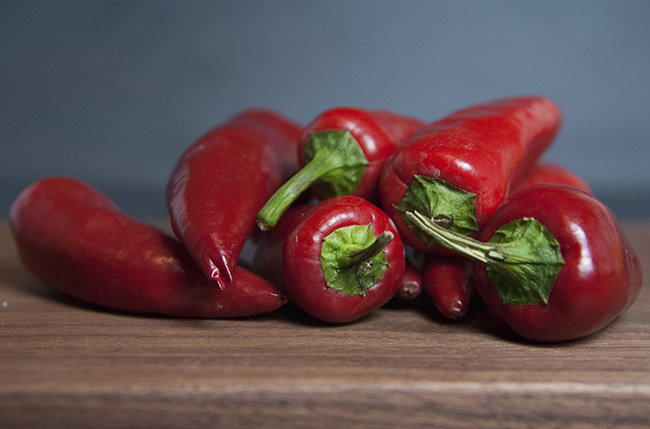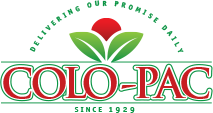
Fresno peppers were first commercially grown and sold in 1952. They are a member of the species Capsicum annuum, the same species as the jalapeño and bell pepper. Fresnos are similar to jalapeños, but they are considered as a separate type of pepper, due to their distinct flavor, texture and shape. The two types of chilies are often confused since they look very similar, however there are some distinguishing features that can be used to tell one from the other. Fresno peppers are typically shorter, but wider than jalapeños. Fresno peppers also have thinner walls, so they may feel somewhat lighter than jalapeños. Both jalapeños and Fresno chilies are bright green when unripe, and turn red when mature and they can be used in any stage of ripeness. Fresno peppers, however, change significantly in flavor and spiciness as they ripen. Green Fresno peppers are much milder, and the fully ripe, vibrant red ones are quite a bit spicier, but less flavorful. Fresnos range in heat from 2,500-10,000 Scovilles, which means they are generally as spicy as jalapeños, but they can be much spicier than jalapeños when they are fully ripe. The pepper was named by its developer, Clarence Brown Hamlin, after Fresno, California where they were first grown.
Fresno chilies are often used in the same ways as jalapeños, but the stage of the Fresno’s ripeness can sometimes dictate what it is best used for. The milder green Fresnos are generally used to bring flavor to savory recipes including soup, stews and slow cooked chili. Green Fresno peppers can be pickled and eaten whole for a spicy snack. The spicier, mature, red Fresno is primarily used to add heat rather than flavor. Fresh red Fresno peppers are a great addition to homemade salsa, guacamole and relish. They can also be a bright, less spicy alternative to serrano peppers. Sautéing or roasting Fresno peppers brings out a sweet smoky flavor. Great appetizers can be made by stuffing Fresno peppers with cheddar or cream cheese along with other fillings like meat or seafood. They can then be breaded and fried, or simply baked. Because of the Fresno’s thin walls, they are not good for drying, but they are often canned, jarred or pickled. Jars of “hot red peppers” or “hot chili peppers” in grocery stores are, more often than not, Fresno peppers. Canned and fresh Fresnos make great toppings for burgers, sandwiches and a variety of Mexican and Tex-Mex foods.
When fresh, the skin of a Fresno is smooth and firm to the touch. The skin is often shiny and will feel waxy. They can be stored at room temperature for about a week. When the skin wrinkles and the pepper grows soft, it is no longer good and should be thrown away. When preparing Fresnos, first wash the chili with cool water and pat dry with a clean towel. Then remove the stem by slicing off the cap of the pepper. To reduce the heat of a recipe, remove the seeds and membranes from the pepper. To do this, slice the pepper lengthwise and scrape out the white membranes and seeds with a spoon and discard. The seeds and membranes contain most of the heat, but the flesh of the pepper will still add flavor and a touch of spice to a dish. It is important to remember when preparing spicy peppers to thoroughly wash your hands before touching your eyes, face or any other sensitive body parts because the oils in chilies will cause serious irritation.


 BACK TO PRODUCTS
BACK TO PRODUCTS